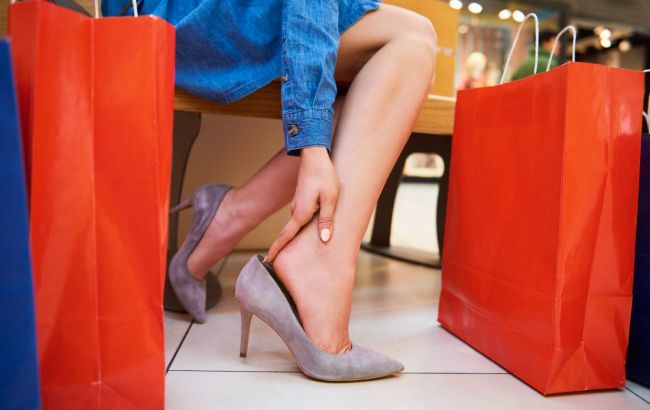High heels: 7 health risks you face
 What are the dangers of high-heeled shoes (photo: Freepik)
What are the dangers of high-heeled shoes (photo: Freepik)
Many women prefer high-heeled shoes because they elongate the figure and look very elegant. However, constant wearing of such footwear can lead to numerous health problems. Phlebologist Lina Grinshpun comments on the risks associated with high-heeled shoes.
Dangers of wearing high heels
Research has revealed what happens to the feet with constant high heel wearing:
- formation of calluses and Hallux valgus - bunion formation;
- increased risk of injuries;
- weakening of calf muscles;
- foot imbalance;
- degenerative changes in joints, osteoarthritis;
- haglund's deformity - bony enlargement of the heel;
- back strain and lower back pain.
"Buy shoes in which your feet feel comfortable. Cut out a cardboard in the shape of your foot and take it with you when shopping to choose the right shoe size. If the cardboard doesn't fit, be sure not to buy those shoes," says the doctor.
High heels compress blood vessels and lead to bloody calluses in people prone to swelling. It is advisable to consult with a cardiologist and phlebologist regarding the causes of swelling and undergo treatment. During this period, it is advisable to refrain from wearing high heels.
"If you find it difficult to give up heels, bring alternate shoes to work with you. It is also worth adding sports activities to your daily life. Strengthen the foot muscles, stretch the calf muscles with special exercises," advises the phlebologist.
Pregnant women in the last months of pregnancy should avoid wearing high heels. Otherwise, there is a risk of foot deformation. The heavier you are, the more strain on your toes and the entire surface of your foot.
When you can wear high heels:
- If you are comfortable physiologically and psychologically
- The shoes have good supination support
- The shoes do not squeeze the foot
- The heels are correctly positioned in the middle of the heel
"However, even under these conditions, remember to alternate between high heels and comfortable shoes," advises the phlebologist.
We wrote about exercises that protect against varicose veins.
Also, read about the 4 simple rules that will help keep your joints strong and healthy.
This material is for informational purposes only and should not be used for medical diagnosis or self-treatment. Our goal is to provide readers with accurate information about symptoms, causes, and methods of detecting diseases. RBС-Ukraine is not responsible for any diagnoses that readers may make based on materials from the resource. We do not recommend self-treatment and advise consulting a doctor in case of any health concerns.

